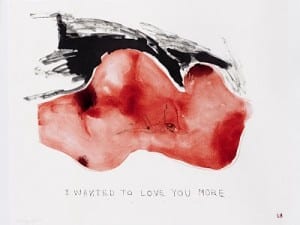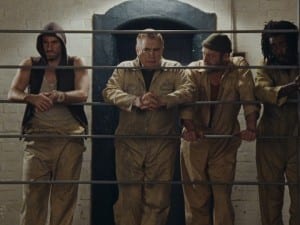BERLONI, formerly EB&Flow, has opened a new space in central London this Frieze week. Launching with an exhibition by Artists Anonymous, the new gallery takes over the entirety of the three-story Margaret Street space with a surreal distortion of its interiors. The building will be transformed by real trees, turf and Victorian wallpaper, and audiences will find themselves in an unnatural ecosystem. Aesthetica speaks to Robin Mann, who co-directs the gallery with Margherita Berloni, about the show and his enjoyment of Frieze London.
A: When choosing which artists to work with, what do you look out for in a practice?
RM: The first thing we look for is the potential for development beyond an initial gallery exhibition, for example, the prospect of being able to progress the collaboration and perhaps take the work out of the gallery to other sites. For us the first body of work is like a trundling vehicle that can become the catalyst for a fruitful journey. Ultimately the work has to be something that we find not only visually arresting, but also has the kernel of a story or debate that will unfold as the collaboration evolves. Both myself and my co-director Margherita Berloni collect and we have extremely similar ideas about the kind of work we want to hang in the home we share in Canonbury.
A: What is it about Berloni that makes it unique?
RM: We really look after and care for our artists, which means putting in considerable time for them. We don’t see our artists as commodities; we genuinely get inspired by their work – that’s our impetus to carry on. We’re now talking about turning one of the rooms at the back of our new space into a residential studio for our artists, a W1 refuge where they can continue their practice. I really hope that this isn’t, in fact, a unique approach and that all gallerists have the humility to understand and work closely with their artists.
A: You are opening with a solo exhibition by Artists Anonymous, how would you define their work to someone who hasn’t seen it before?
RM: The current exhibition is a pure phenomenology and you really have to experience it first hand to get at all close to a definition of their work. A visit to an Artists Anonymous show involves stepping into their world: a place that is fantastical; comedic; psychological and implicit. Our ground floor space has become a garden where the first thing that hits you is the smell of the grass, the sound of running water; and this is before the visitor even walks downstairs and through the bedroom, workshops and staircases into a series of tableaux, theatres for living art-pieces.
In and amongst this remarkable, immersive environment are examples of the work for which the group is perhaps best known – negatives of paintings and “afterimages”. Their image/afterimage practice touches on the science of optics – the ability or indeed inability of the human eye to register and understand colour theory. Again, as with the installation itself, to see is to understand.
A: What was it that attracted you to their work?
RM: I’ve worked with them in the past, and whilst we were in the initial stages of the relocation and the rebranding of the gallery, we had speculative talks on the prospect of opening the new space with the sort of installation/exhibition you could only dream about. It essentially represents everything AA’s practice entails (installation, painting, photography, immersive environments), but on a scale that is unprecedented both for them, and indeed for us.
As the shift from east to west for the gallery became a realisation, Frieze week seemed like the perfect time for a launch night. We wanted as many people as possible to be aware that BERLONI is now in central London and that the first show sets the tone for a programme of ambitious and challenging exhibitions.
A: What do you have planned for the future of the gallery?
RM: The 2014 exhibition program will see BERLONI work with both existing artists from the roster, and also a number of new additions to the list. The first show of the year will be by the sculptor Neil Ayling, who has recently unveiled a soaring public sculpture commission in Kings Cross. We’re also programming exhibitions for Palestinian photographer Steve Sabella and the young Scottish painter Steve Allan. The rest I’ll keep under wraps for now. As important and necessary as the art fair circuit has become (and it really is) we feel that as a newly relocated space, our priority is to present a formidable exhibition program. After all, we’ll be judged by fairs, public and collectors on the basis of our programming and it will dictate our chances of placing work with institutions, winning awards, etc.
A: What do you think the benefits of Frieze are to the art scene in London?
RM: I think the fact that we all have Frieze London firmly in our annual arts calendar represents just how significant the fair has become to London, and indeed to the art world. The key people really do travel to be here. For a week the art world flaunts, promotes and negotiate deals. It’s only the second day of Frieze week and I already have the early signs of a cold and aching bones – the frenzy is most certainly upon us!
Artists Anonymous, until 14 December, BERLONI, 63 Margaret Street, London, W1W 8SW.
Credits
1. Image courtesy of Berloni and Artists Anonymous.





